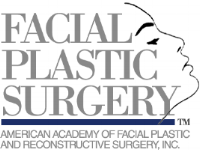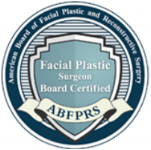MOHs Reconstructive Surgeon
 If you get the unfortunate news that you have skin cancer is bound to induce stress; MOHs removal surgery is effective, but it may stress you out even more to know that there will be a gaping hole where the cancerous growth once was.
If you get the unfortunate news that you have skin cancer is bound to induce stress; MOHs removal surgery is effective, but it may stress you out even more to know that there will be a gaping hole where the cancerous growth once was.
MOHs is the best treatment for removing skin cancer, but many patients are dismayed to learn that it’s essentially cutting out the cancerous growth from the surrounding tissue. The surgeon will cut as deep as necessary to remove the cancer, leaving a rather sizable wound in some cases.
Luckily, facial reconstructive surgery can be done to cover up and correct this issue.
How do you treat skin cancer scars? If you visit the best cosmetic surgeon in Los Angeles, your scars can be obscured so well that they are hardly noticeable. This option is especially preferred for those who had skin cancer on their face.
MOHs repair is the name for the surgery that treats the scars, and our doctors can perform it with expertise and ease. Minimal scarring is a pillar of our plastic surgery group, and we try to make every patient’s skin look flawless (we even perform rhinoplasty without leaving scars!)
Our MOHs repair surgery in Los Angeles can be done in a number of ways. The methods of reducing the appearance of scarring post-MOHs surgery include:
- Flap techniques
- Bone grafting
- Cartilage grafting
- Tissue expansion
- Skin grafts
- Primary closure
Risk Factors for More Significant Scarring
Your skin may be more prone to scarring after skin cancer removal. Unfortunately, you may be part of certain groups with more risk factors, which include:
- Having pale skin
- Genetic variations that may be associated with scar formation
- Age
- Bacterial colonization
- Location of the wound
Obscuring Scars after MOHs
In order to help your skin feel normal after MOHs, we offer different kinds of treatments to minimize scarring. These treatments include both sewing the wound shut and in more serious cases, using another piece of skin to cover the wound.
Primary closure: Primary closure can only be used for patients who had minor surgery where a minimal amount of skin was removed. This option includes letting the wound heal on its own; if the wound is on the larger side, sutures can be strapped over the wound to aid with the healing process.
Local flap: The local flap reconstructive method for MOHs uses the surrounding, untouched skin to close small incisions. Our facial surgeons perform this method on those with smaller wounds and recommend that you wait a few days to undergo their MOHs surgery. Waiting a few days will let your skin start the healing process, which will in turn improve the recovery and minimize scarring.
Staged procedure: A staged procedure is a multi-step process. For this kind of procedure, the doctor will place an expander under the healthy skin on the forehead to stretch the skin and cause it to create more. The new, healthy skin can then be taken and used to cover the wound in a natural-looking way.
Skin graft: If you require more serious reconstructive surgery, you may need a skin graft. This is when the surgeon sources skin from other areas of your body to use to cover the wound.
The fact that you’ve overcome skin cancer is a victory, but the fear of scarring can get in the way of celebration. Luckily, Westside Face offers skin cancer reconstructive options that can get your skin back to looking as close to normal as possible.
Our surgeons can offer you additional methods of minimizing your scars, such as:
- Fillers
- Laser skin treatments
- Skincare regimens to reduce scarring
- Tips to protect your skin from the sun







